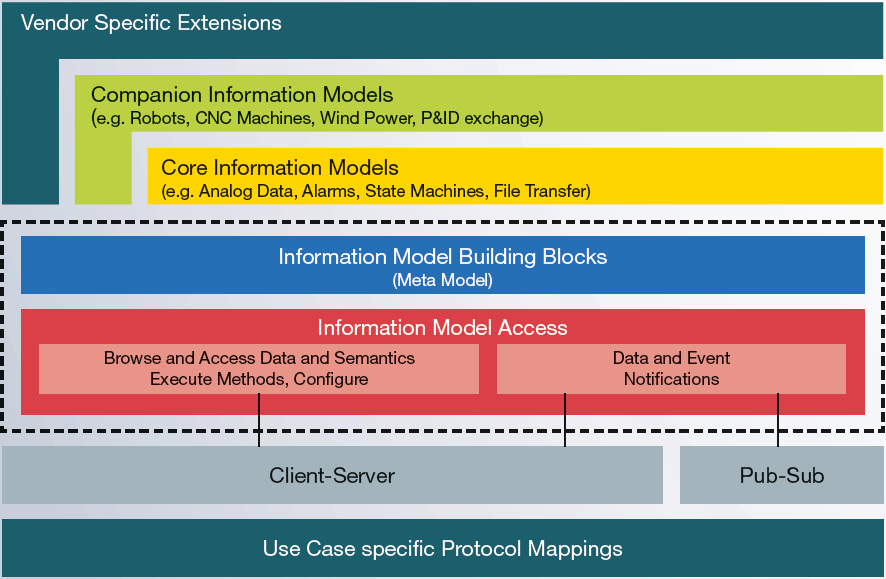
The OPC Unified Architecture (UA), released in 2008, is a platform independent service-oriented architecture that integrates all the functionality of the individual OPC Classic specifications into one extensible framework.
This multi-layered approach accomplishes the original design specification goals of:
Building on the success of OPC Classic, OPC UA was designed to enhance and surpass the capabilities of the OPC Classic specifications. OPC UA is functionally equivalent to OPC Classic, yet capable of much more:
Integration between OPC UA products and OPC Classic products is easily accomplished with COM/Proxy wrappers that are available in the download section.
Given the wide array of available hardware platforms and operating systems, platform independence is essential. OPC UA functions on any of the following and more:
OPC UA provides the necessary infrastructure for interoperability across the enterprise, from machine-to-machine, machine-to-enterprise and everything in-between.
One of the most important considerations in choosing a technology is security. OPC UA is firewall-friendly while addressing security concerns by providing a suite of controls:
The multi-layered architecture of OPC UA provides a “future proof” framework. Innovative technologies and methodologies such as new transport protocols, security algorithms, encoding standards, or application-services can be incorporated into OPC UA while maintaining backwards compatibility for existing products. UA products built today will work with the products of tomorrow.

The OPC UA information modeling framework turns data into information. With complete object-oriented capabilities, even the most complex multi-level structures can be modeled and extended.
This framework is THE fundamental element of OPC Unified Architecture. It defines the rules and base building blocks necessary to expose an information model with OPC UA. While OPC UA already defines several core models that can be applied in many industries, other organizations build their models upon them, exposing their more specific information with OPC UA.
OPC UA also defines the necessary access mechanisms to information models.
For Client-Server communication the full range of information model access is available via services and in doing so follows the design paradigm of service-oriented architecture (SOA), with which a service provider receives requests, processes them and sends the results back with the response.
Publish-Subscribe (PubSub), provides an alternative mechanism for data and event notification. While in Client-Server communication each notification is for a single client with guaranteed delivery, PubSub has been optimized for many-to-many configurations.
With PubSub, OPC UA applications do not directly exchange requests and responses. Instead, Publishers send messages to a Message Oriented Middleware, without knowledge of what, if any, Subscribers there may be. Similarly, Subscribers express interest in specific types of data, and process messages that contain this data, without a need to know where it originated from.
Learn how other standards organizations are leveraging OPC UA through collaborations with the OPC Foundation.